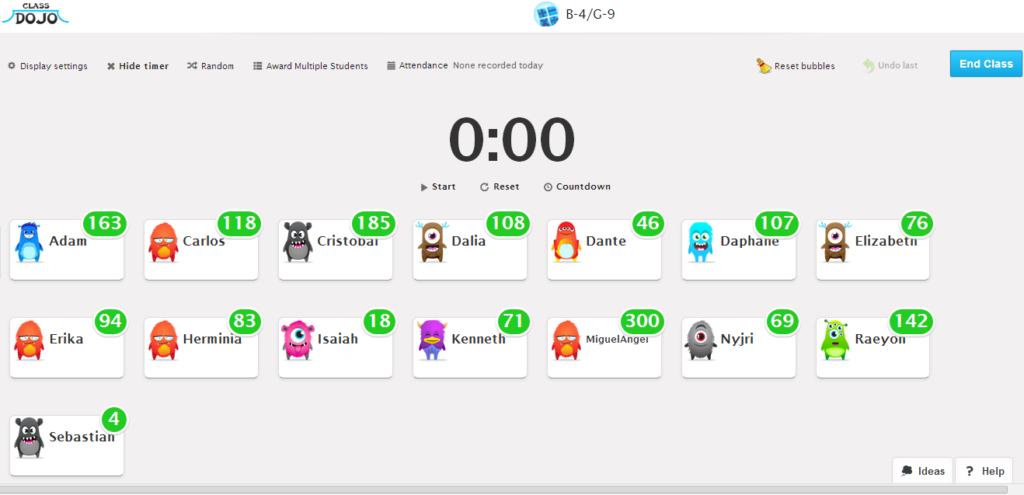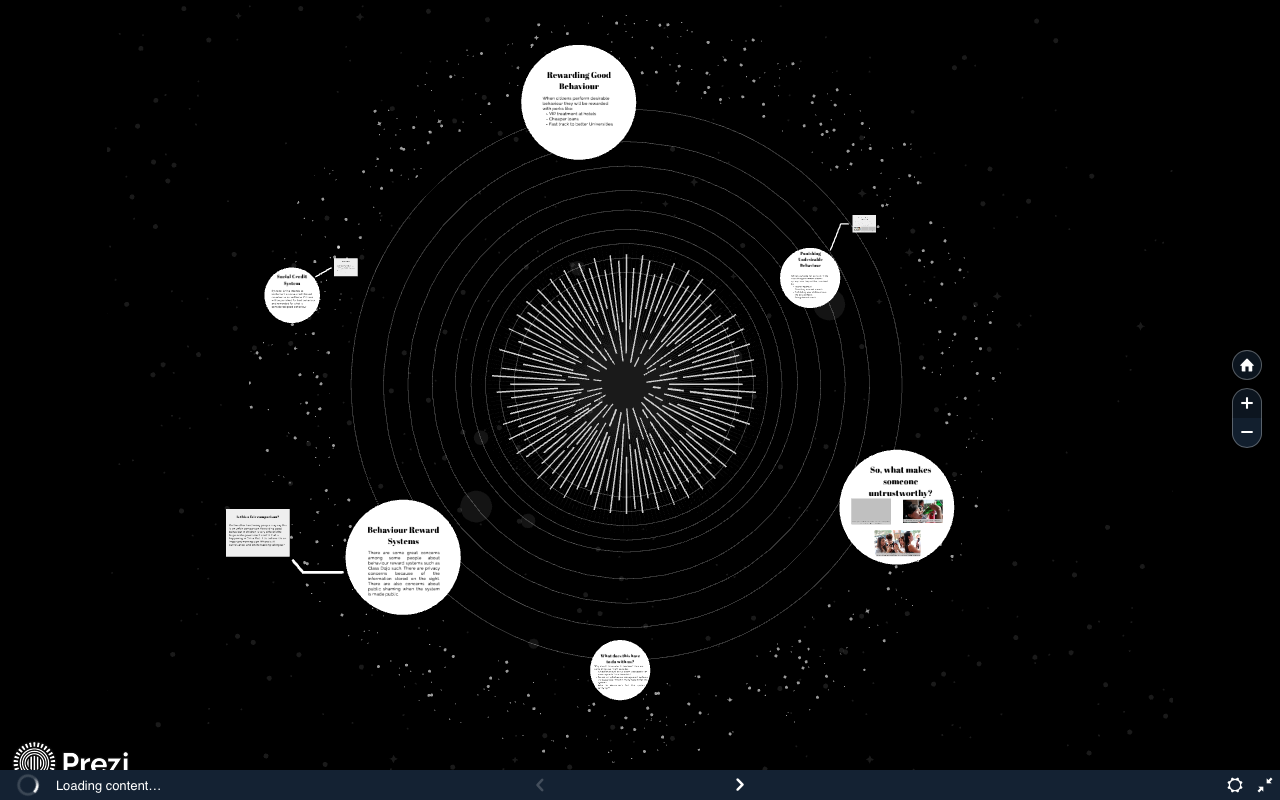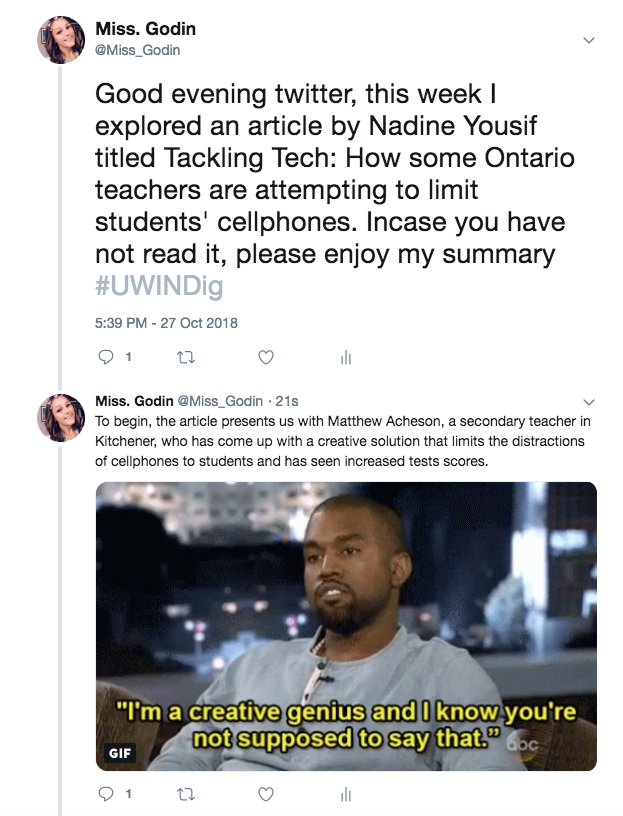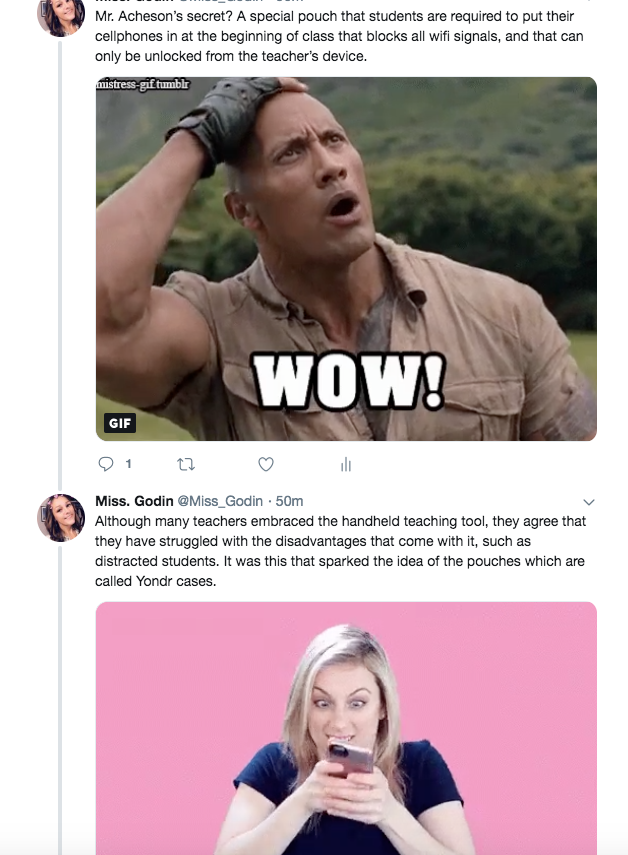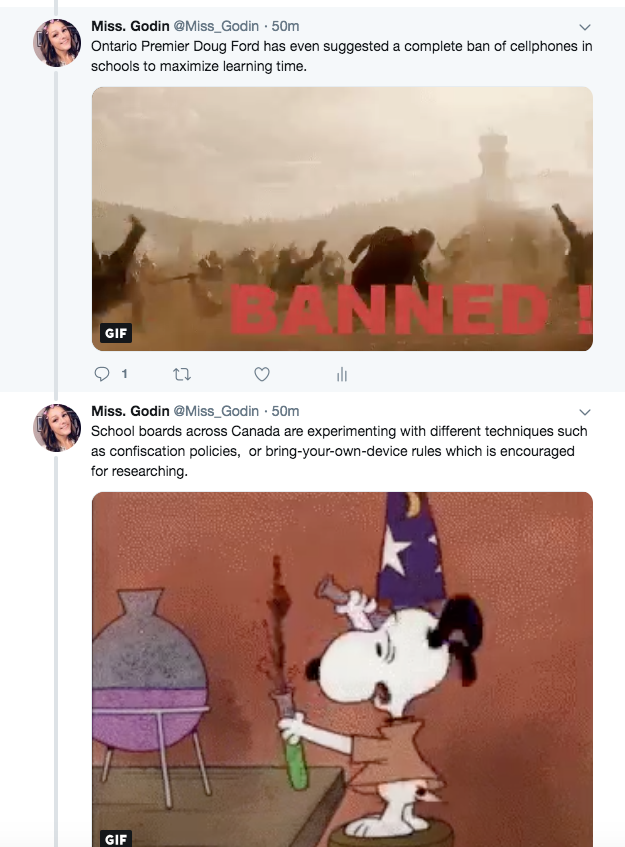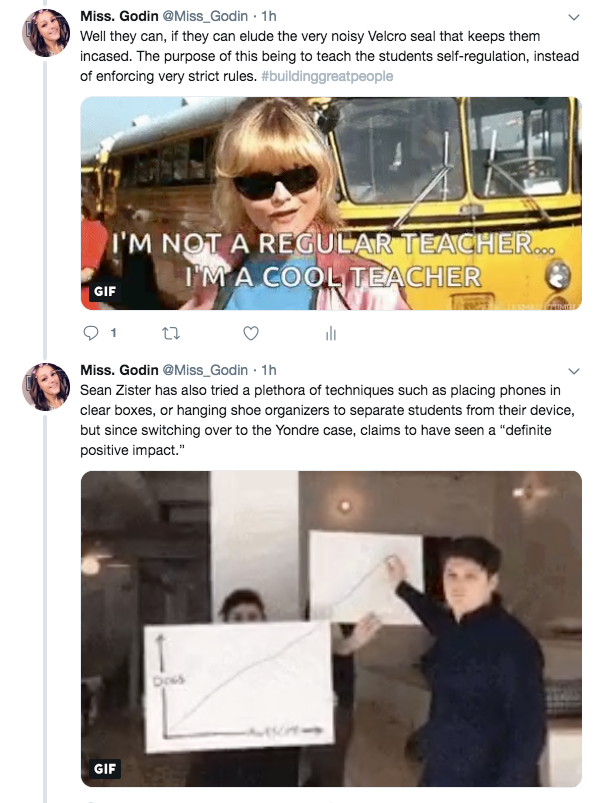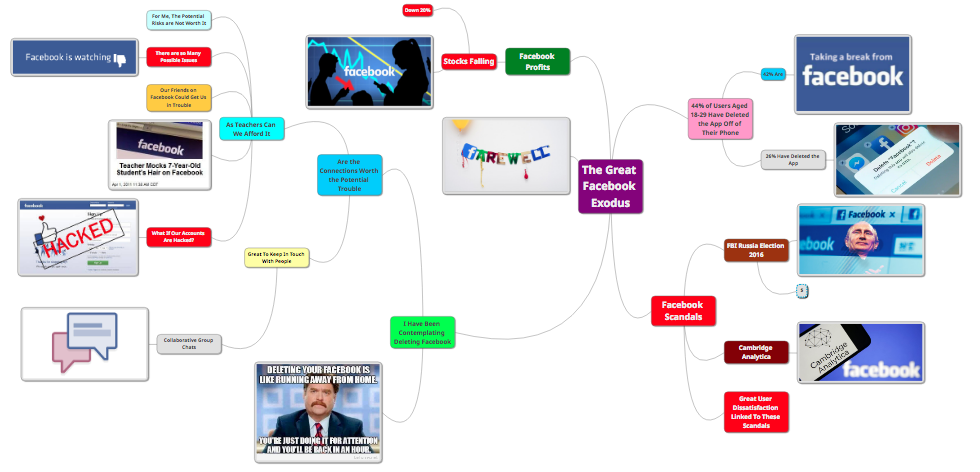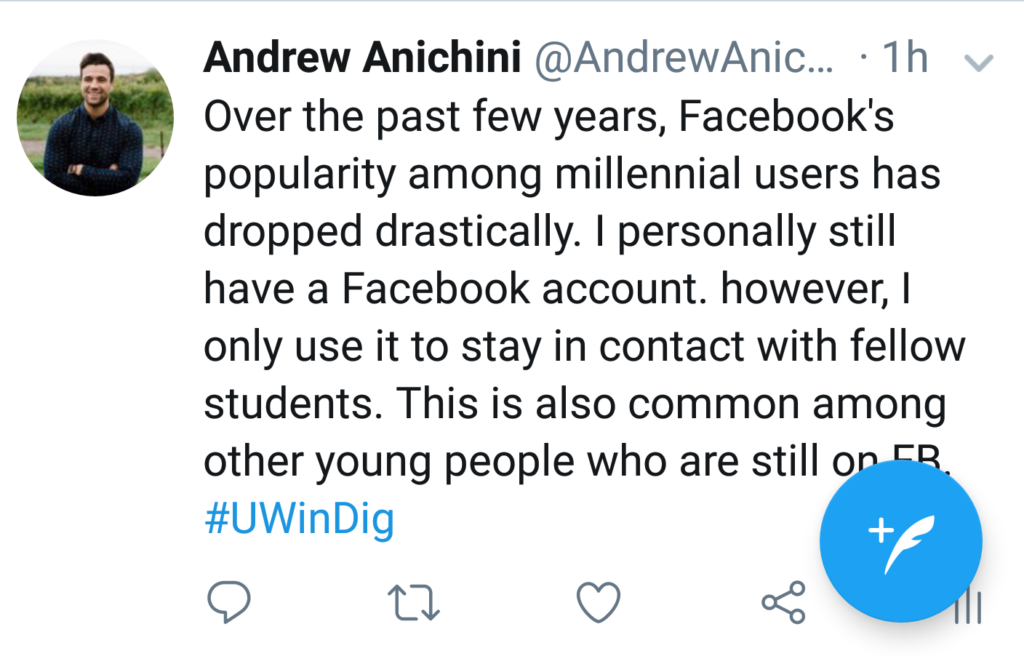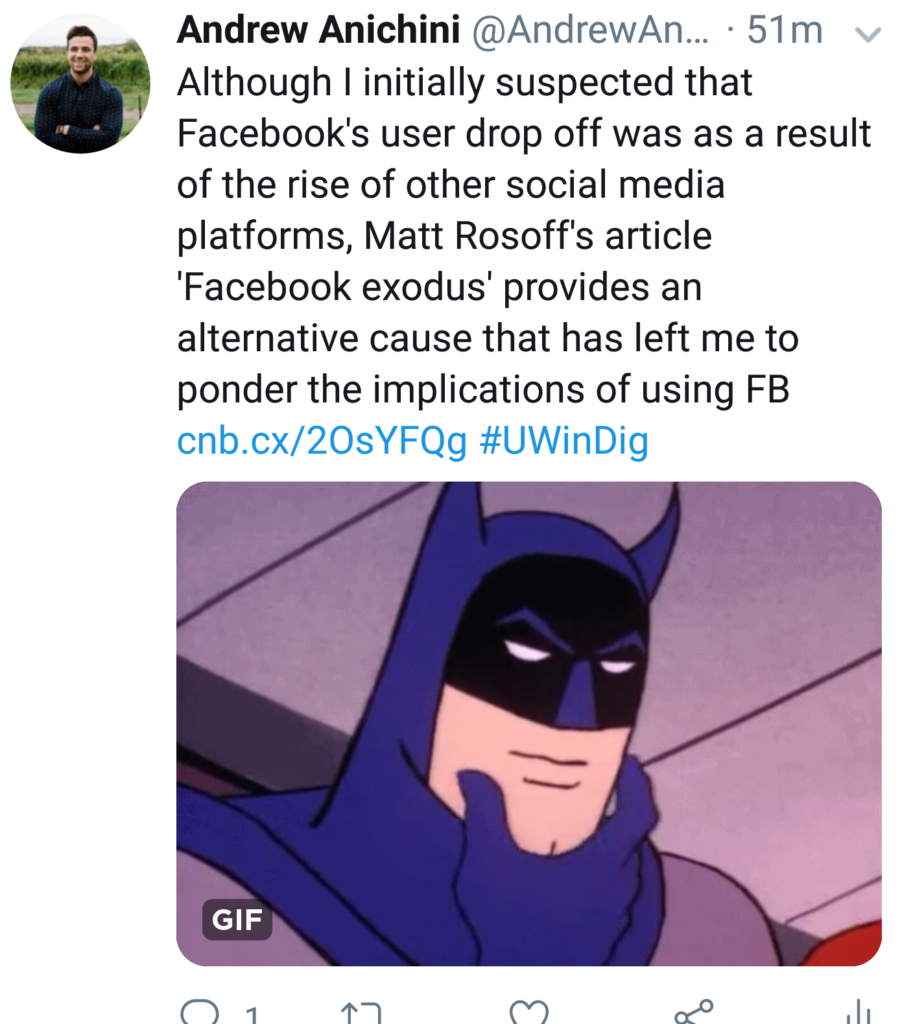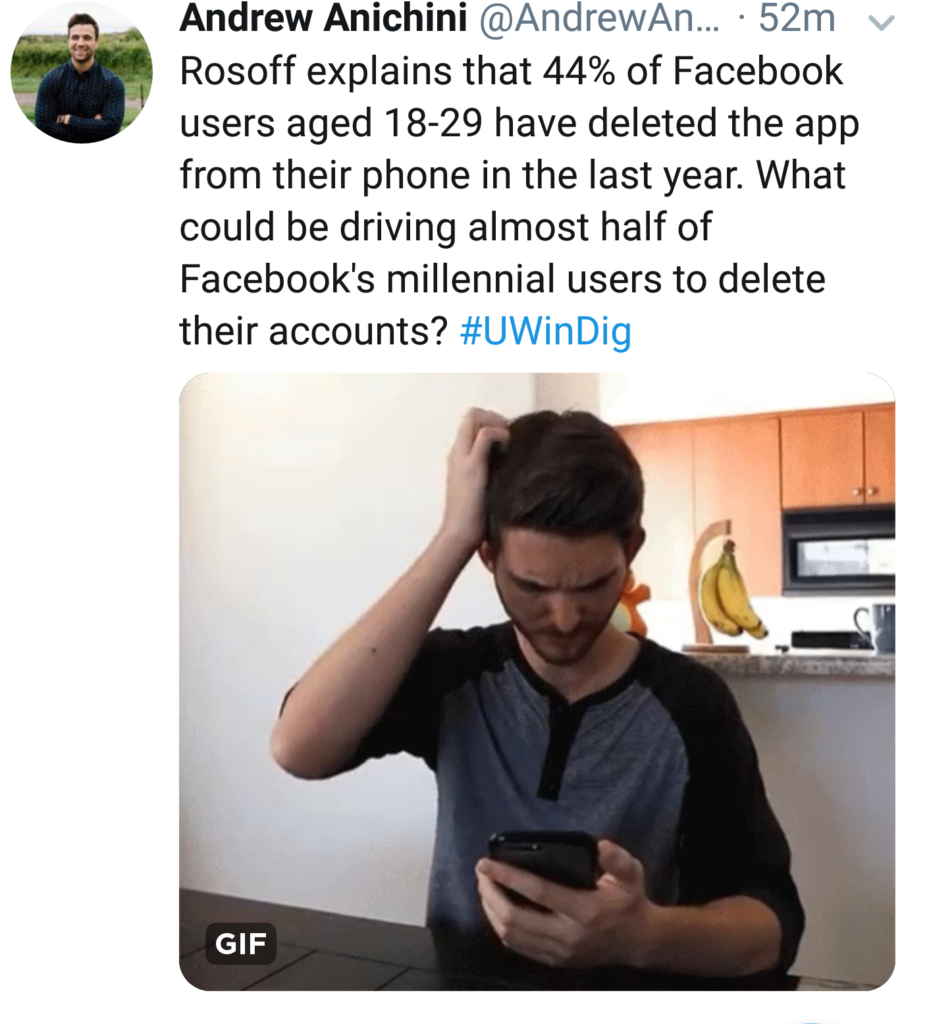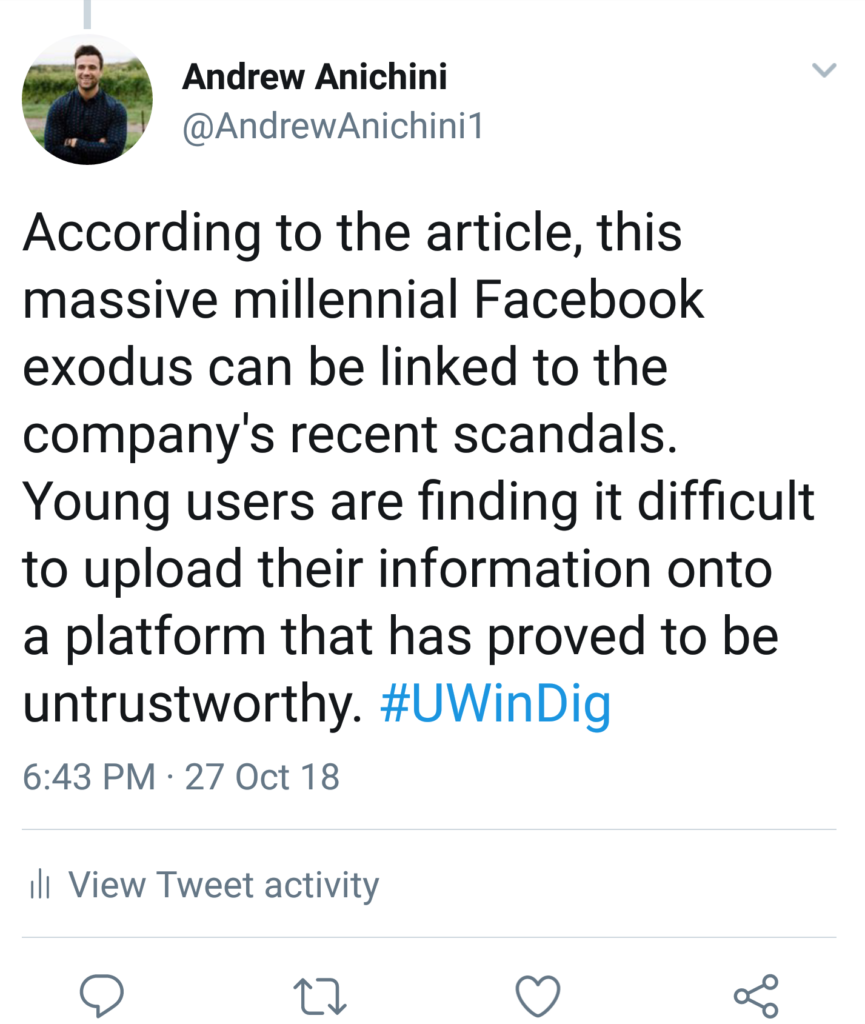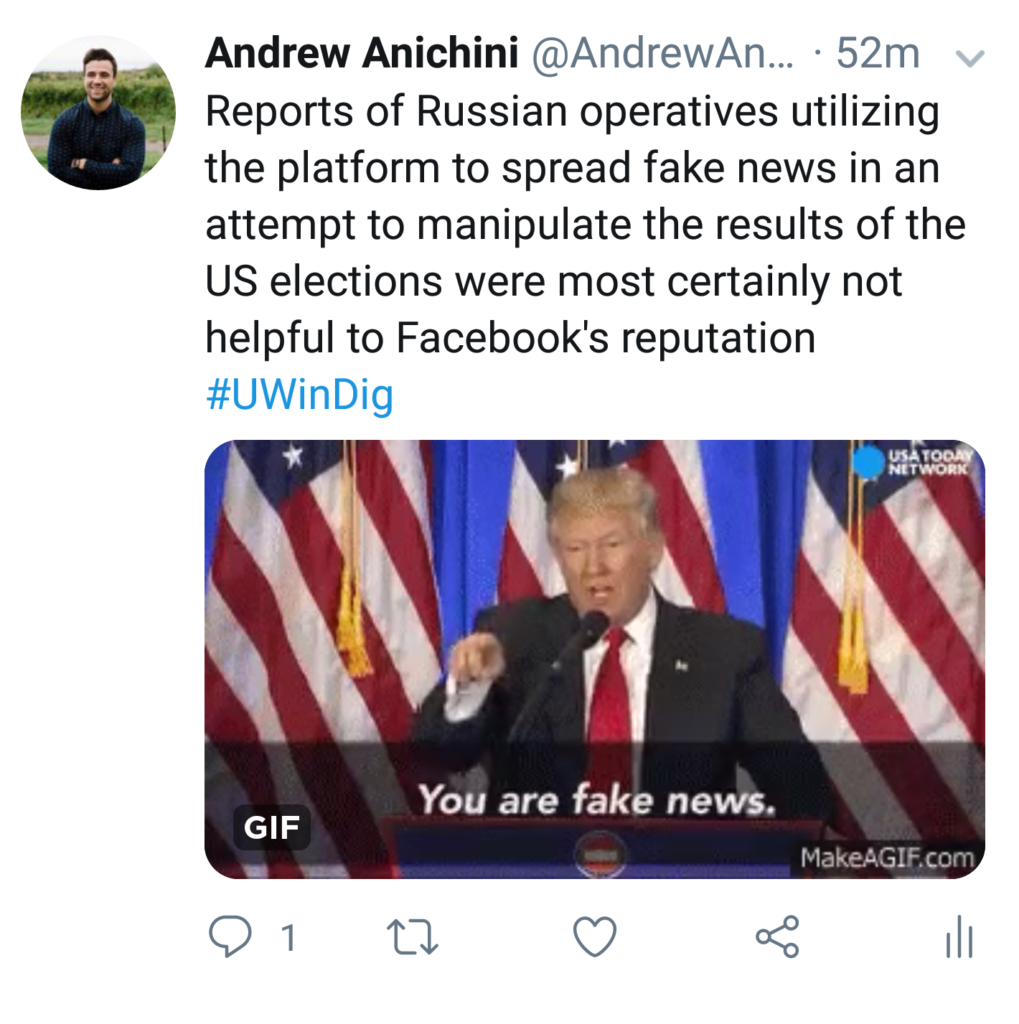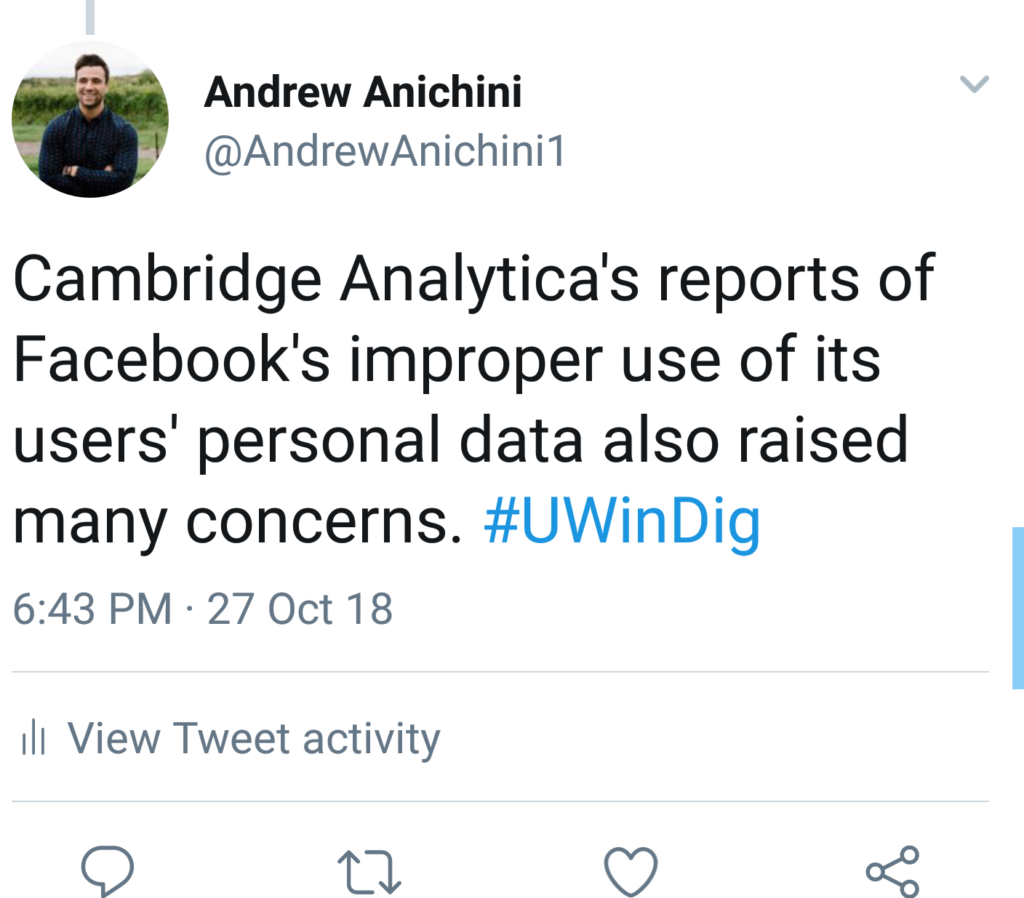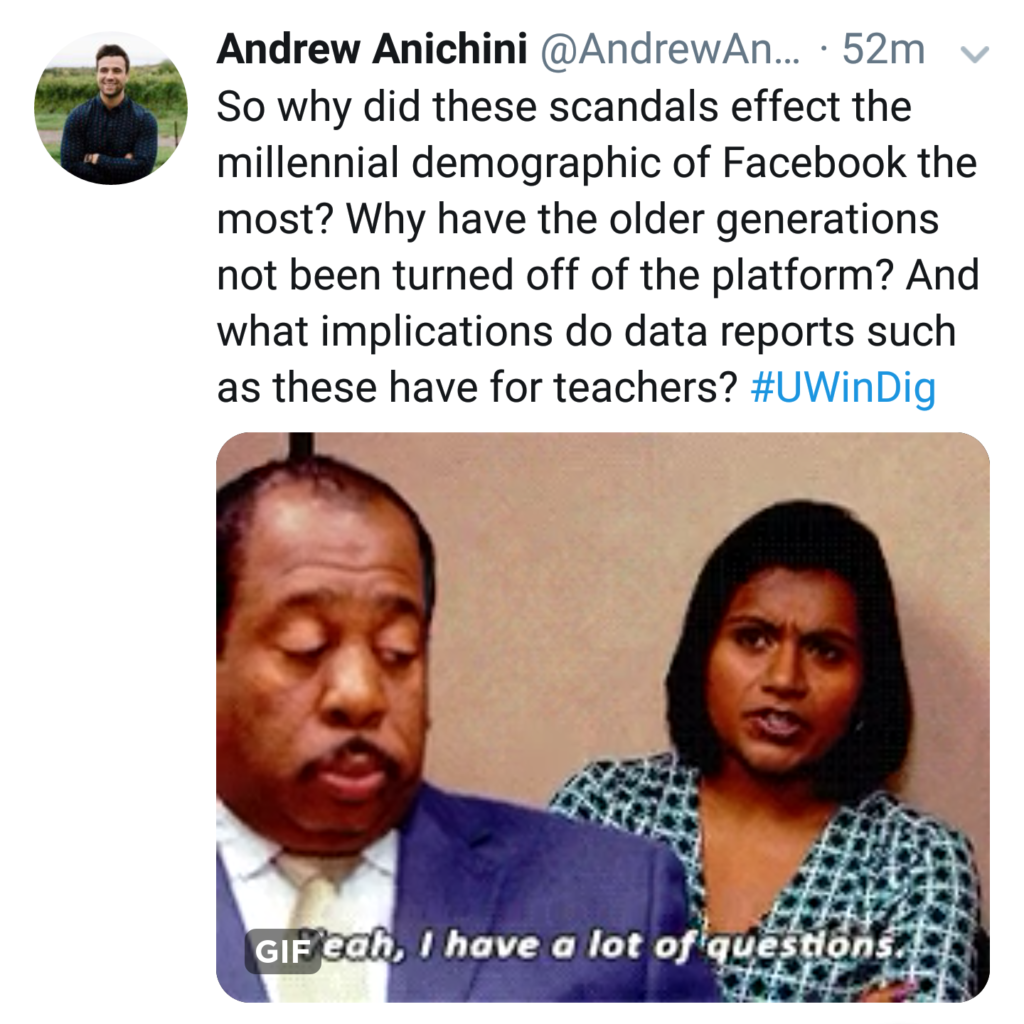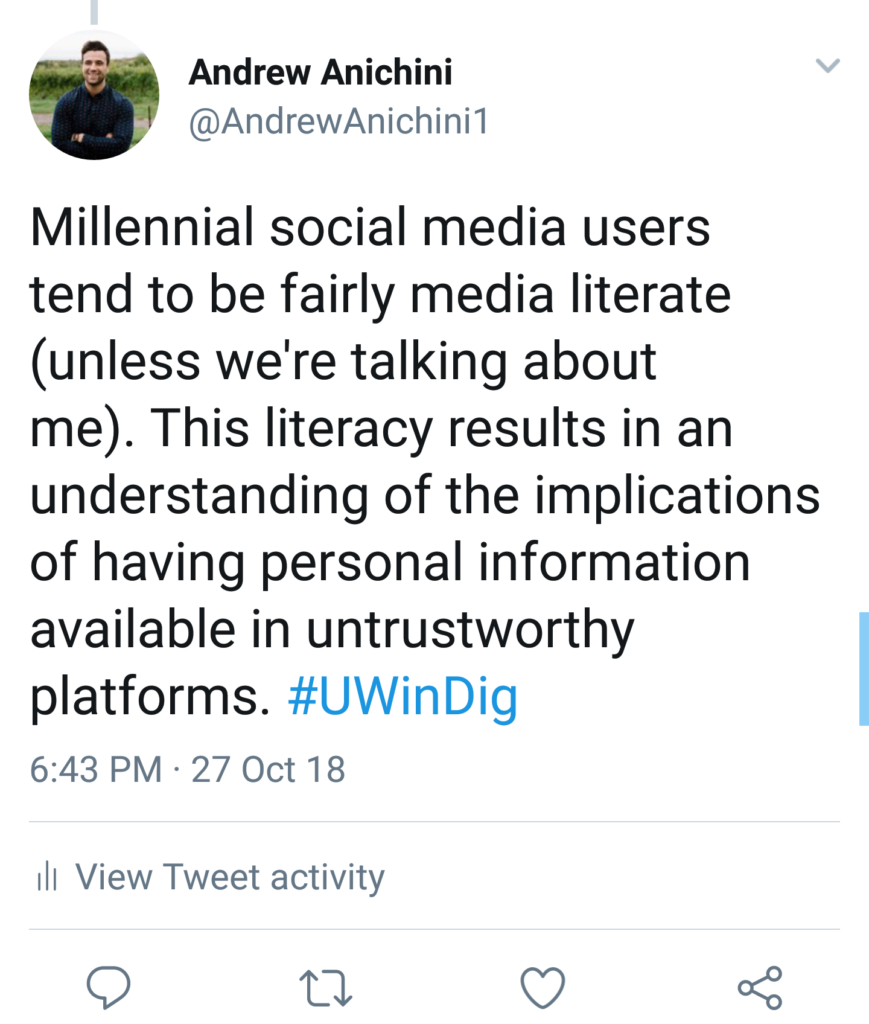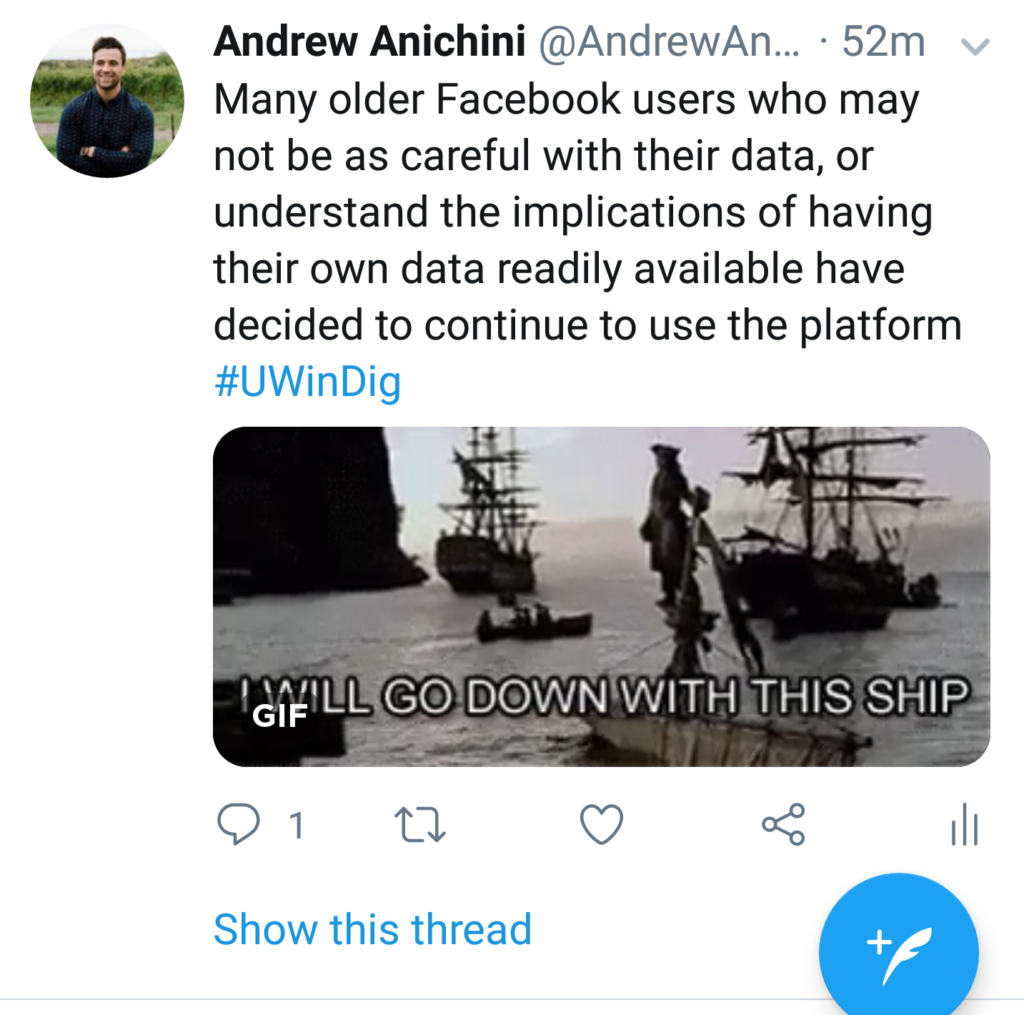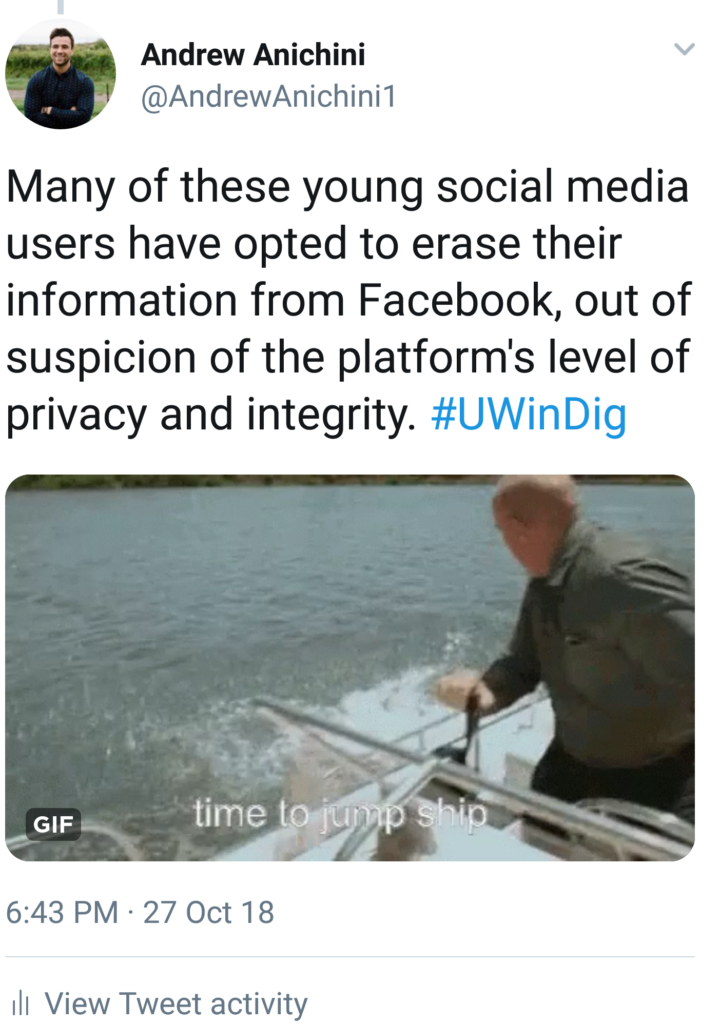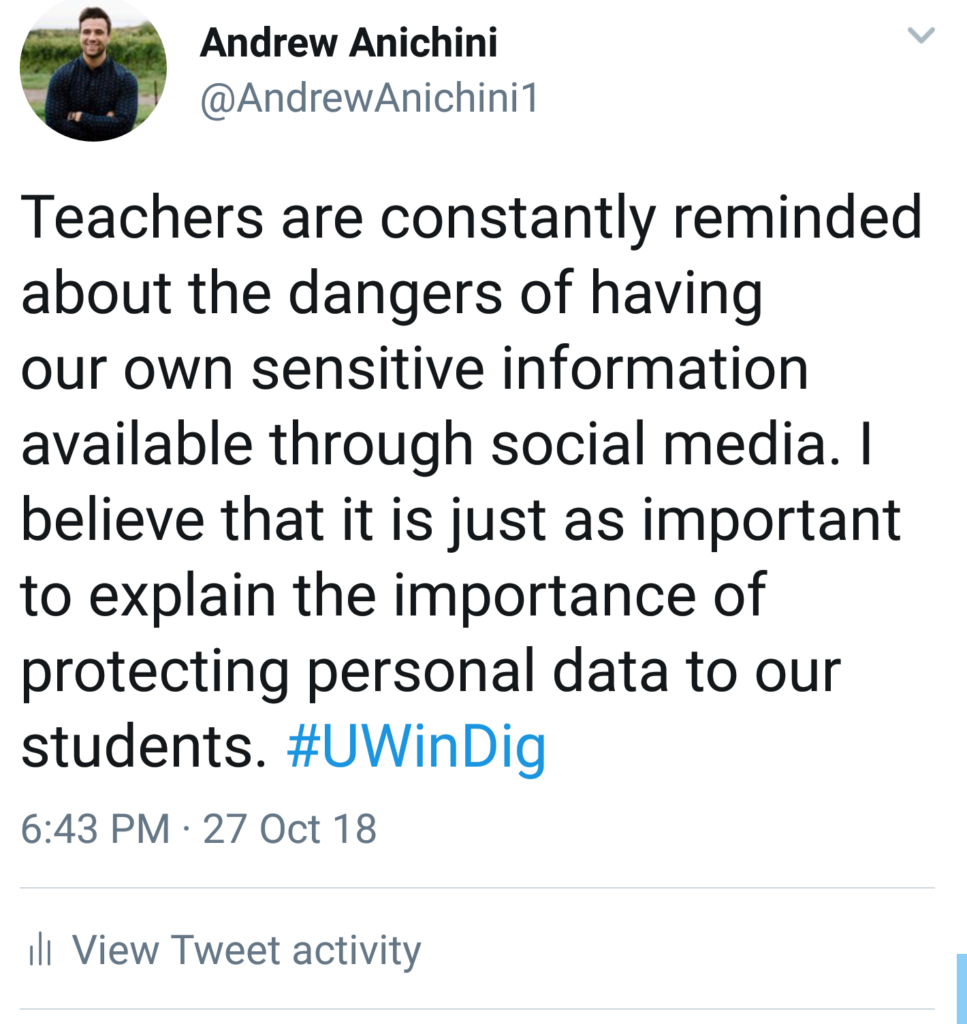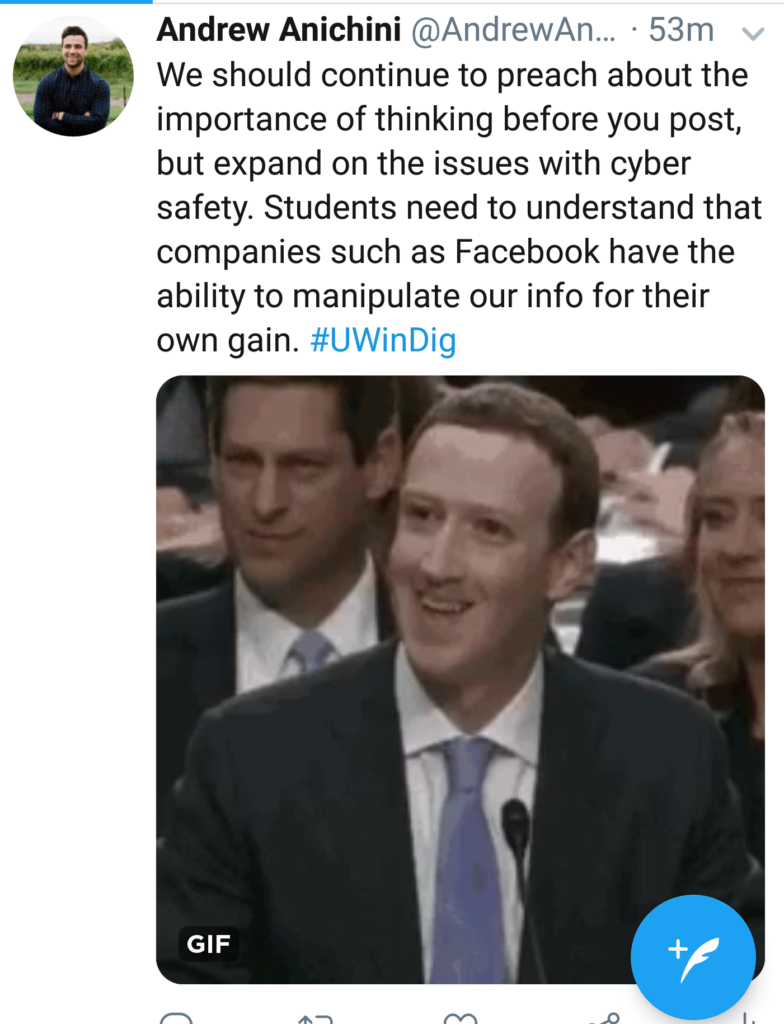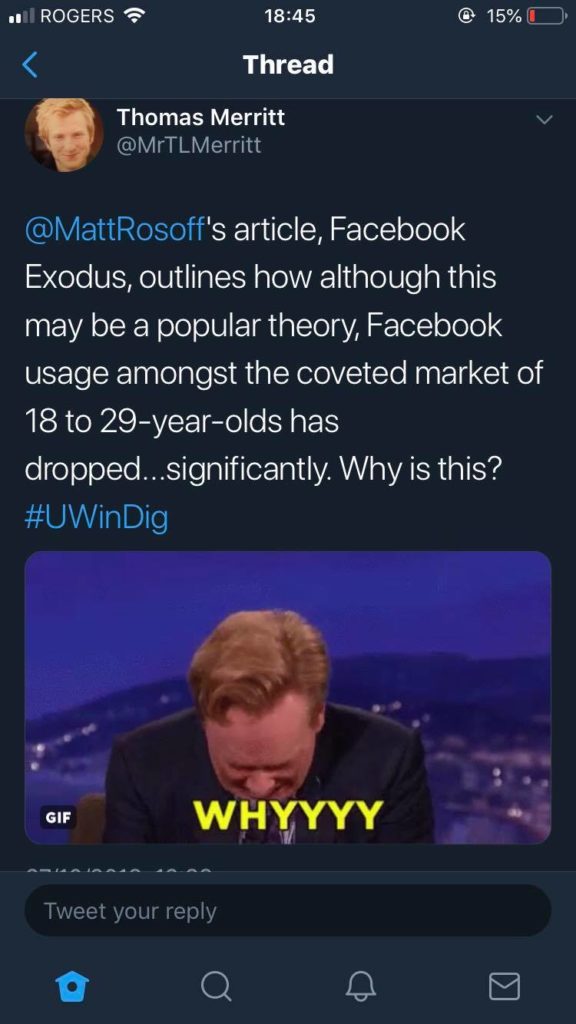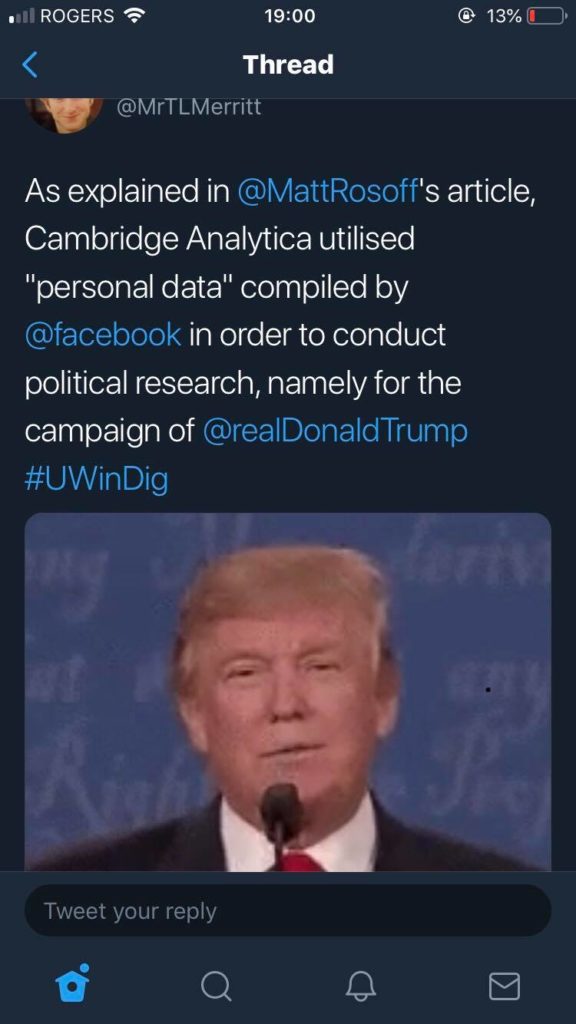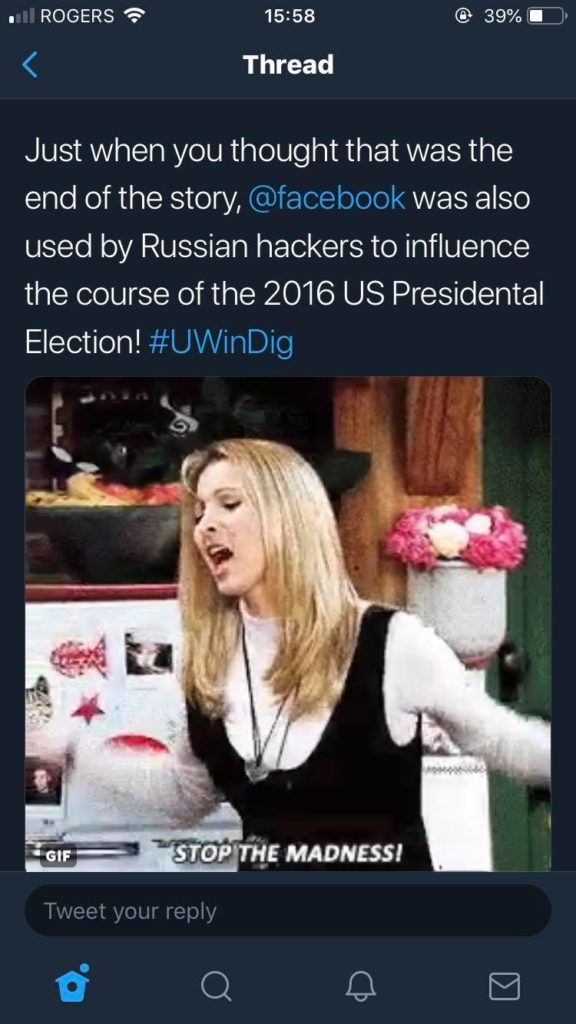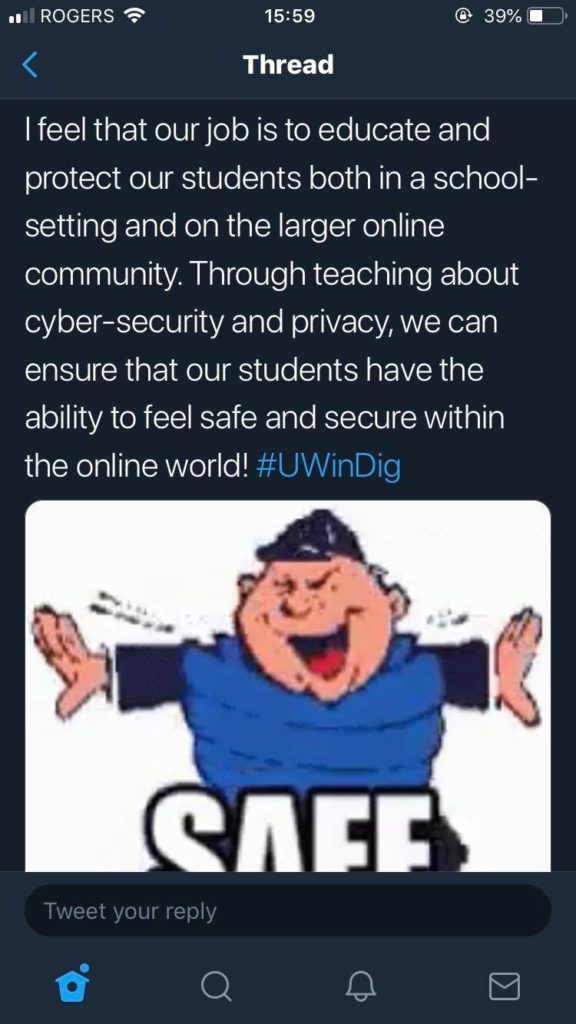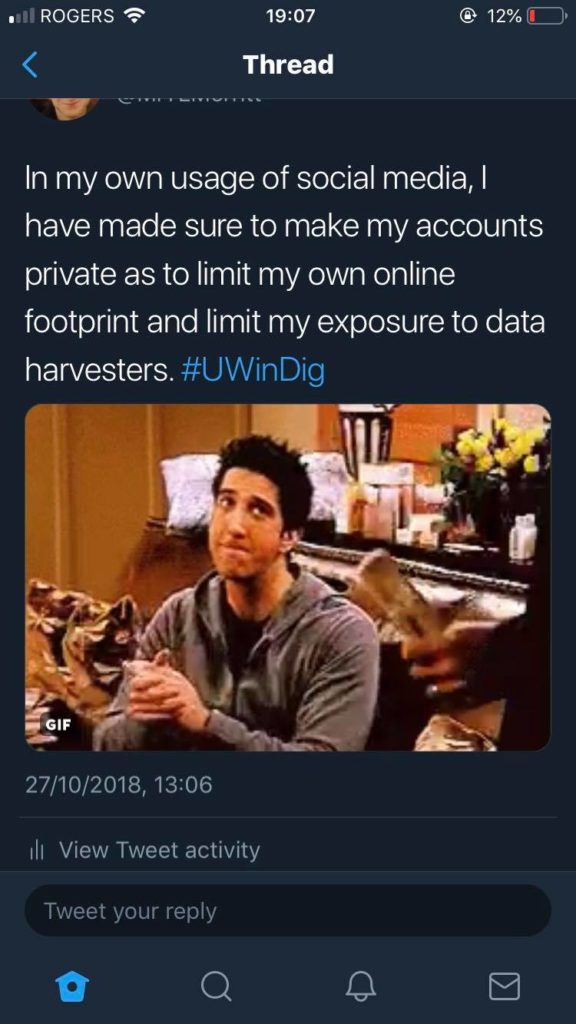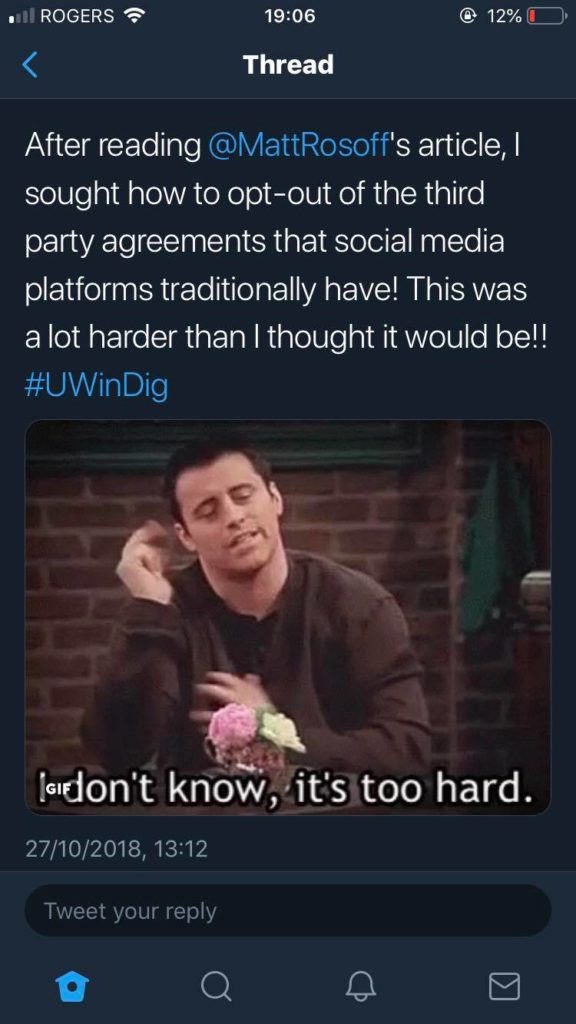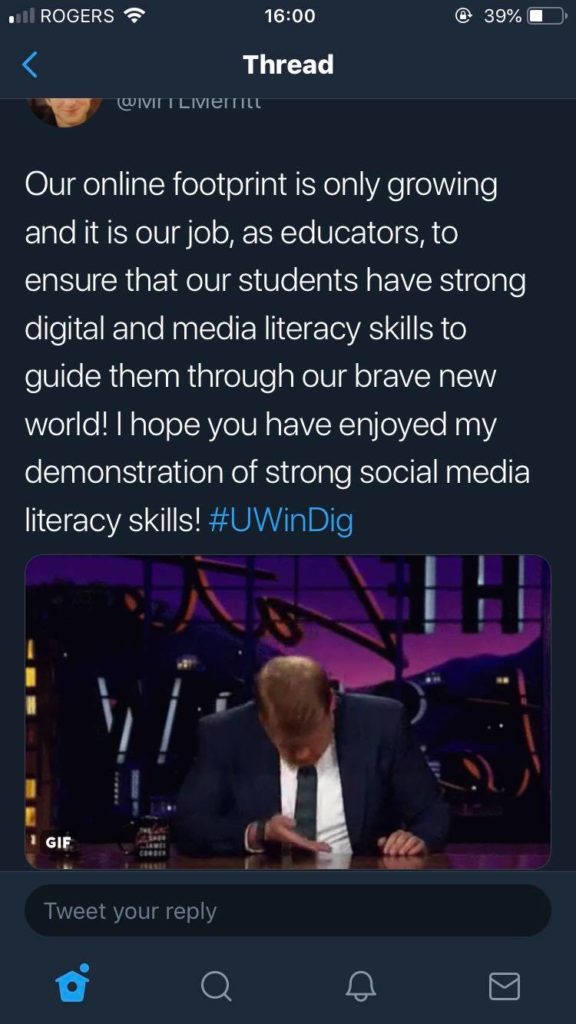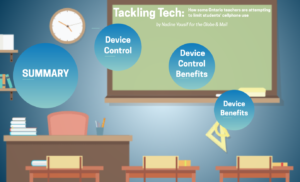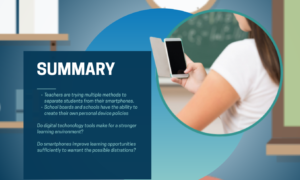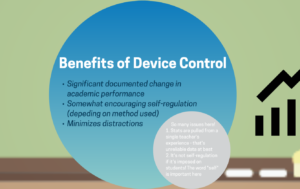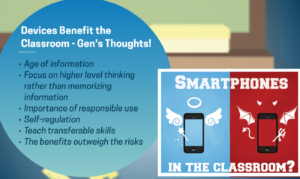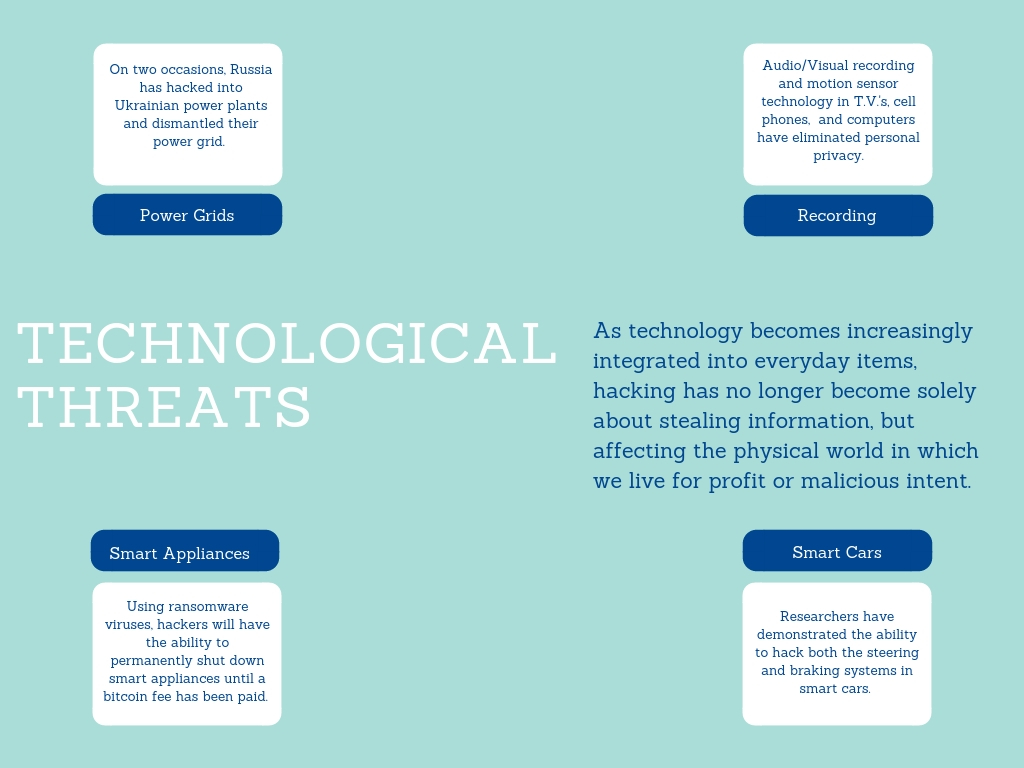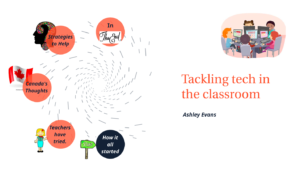The medium Canva was used to create a infographic to represent the main ideas and reflection of the article from the Globe and Mail Canada called Tackling Tech: How some Ontario Teachers are attempting to limit students’ cellphone use by Nadine Yousif. The article discussed the impact that technology has in the classroom and the innovations that have been created and implemented in order to limit the distractions and optimize technology. Technology in the classroom will be an ongoing issue in the future but if used correctly, it can have a positive impact on a student’s engagement and experience in the classroom. One idea explores the possibility of banning cell phones on school property, similar to the ‘ detox law‘ by the France government. I personally do not believe this will be as effective as anticipated due to the importance of technology in this day and age. Technology should be viewed as negative but rather a positive – there are distractions associated but they can be managed. Cell phones are not only useful to research information for assignments and projects but they also allows students to ‘get in the zone’ when working independently. In my own opinion, I see no issue with using technology as long as the work is being completed at the same rate. During instructional time, strict rules not to be in place to deter students from using their devices with clear consequences if those rules are broken. An important line of the article that stuck with me pertains to Doug Ford and his believe that a cell phone ban will maximize learning time. I do not believe that by taking away technology in the classroom, test scores are going to suddenly increase. It is important to show our students how tech can be used and guide them to be ‘tech-savy’ individuals.
Another idea that was explored is the Yondr. The Yondr is a pouch that the cell phone is held in and can only be unlocked by the home base which the teacher has. Although this solves the issue of technology being used incorrectly, it does pose others issues such as cost of the Yondr, unlocking multiple devices at once with home base and what if a student does not lock their Yondr. The last suggestion that was put forth is the Resistor Case – very similar to the Yondr except it is made with only a few materials and is locked by Velcro. This puts a greater emphasis on student responsibility and accountability to know open the case as well as the fear of fearing the Velcro (which will most likely make the students think twice). I personally think this is my favourite idea in the article as it makes the students more accountable for their actions. This would still allow tech to be used in the classroom but the teacher has more control over the students using with the assistance of the resistor case. Through my own experiences with technology in the classroom was optimized and encouraged. Students were informed of the classroom expectations with technology and were involved in creating the consequence if technology was used incorrectly. This was done in both grade 6 and 8 classrooms. Students were responsible and accountable for their own actions. In my own classroom, I hope to optimize tech but still ensure that classroom management is in tact. I also seen this done in a classroom with labelled pouches at the back of the room for each students where their cell phone should go during instructional time and where they could receive it to use during seat work time. As a teacher, it is important to be an example to your students. Therefore, if you expect your students to be off their phone – this needs to be demonstrated. ‘Monkey see, Monkey do’. During independent work, I would walk around here and there to assist students and ensure that they are on task while using their devices.
Prior to the article, my beliefs about cell phones in the classroom were the same. I believe that technology is some important in the classroom and need to be valued as a great resource. Through my own experiences – I always use technology with school work from my laptop in class to make notes, to music on phone in the background as I am studying to research on the internet. In my own practicum, the students worked independently when they had their own choice of music. I found if music played out loud then someone would complain that they did not like that type or the class would be more concerned with singing out loud than their work. I had never heard about either of these cases before this article but I think they are great alternatives to allow technology in the classroom. I think that it is important that we do not cut off technology but rather limit it . I find even to this day when a professor asks us to turn off our laptop – you can hear the grunt and sighs. We do not like to be disconnected from our devices/technology and when you take it away from us – we are less inclined to be focused. This is the same for our younger generations, if not worse. My own experiences – as a student and a teacher has shaped my beliefs about technology in the classroom. It is so important to make sure that technology does not impede the learning in the classroom while embracing technology. I know, that sounds like quite the challenge and as educators we already have our plates full. I firmly believe that the integration of technology in the classroom differentiates the good teachers from the great teachers.
Although I enjoyed using Canva, there are limitations to such an application. It comes with a number of free templates that can be used to create infographics, posters, card etc. Although these templates can be difficult to alter the predetermined features such as titles in capitals, spacing and text boxes. I found this application very user friendly and simple in the template but limits the creativity and options to change various features. Although these applications are beneficial for students with IEPs and differentiated learning as it offers the framework to follow. This can help to reduce frustrations and allow students to express themselves. Overall, as a future educator I hope to embrace technology in my classroom and implement whenever I can to make a rich, authentic and engagement learning environment for my students.
Check out my Tackling Tech Infographic here!
–Kayla Franco


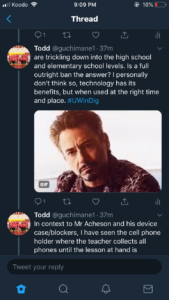
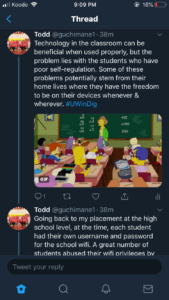
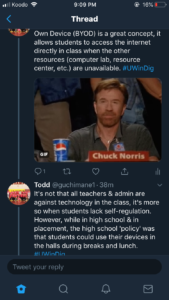
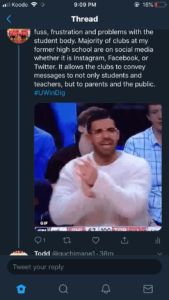

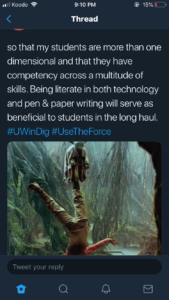
 2020 not directly relatable to education in the Western world. It reads as the script of a Black Mirror episode (in fact, it eerily reflects
2020 not directly relatable to education in the Western world. It reads as the script of a Black Mirror episode (in fact, it eerily reflects 